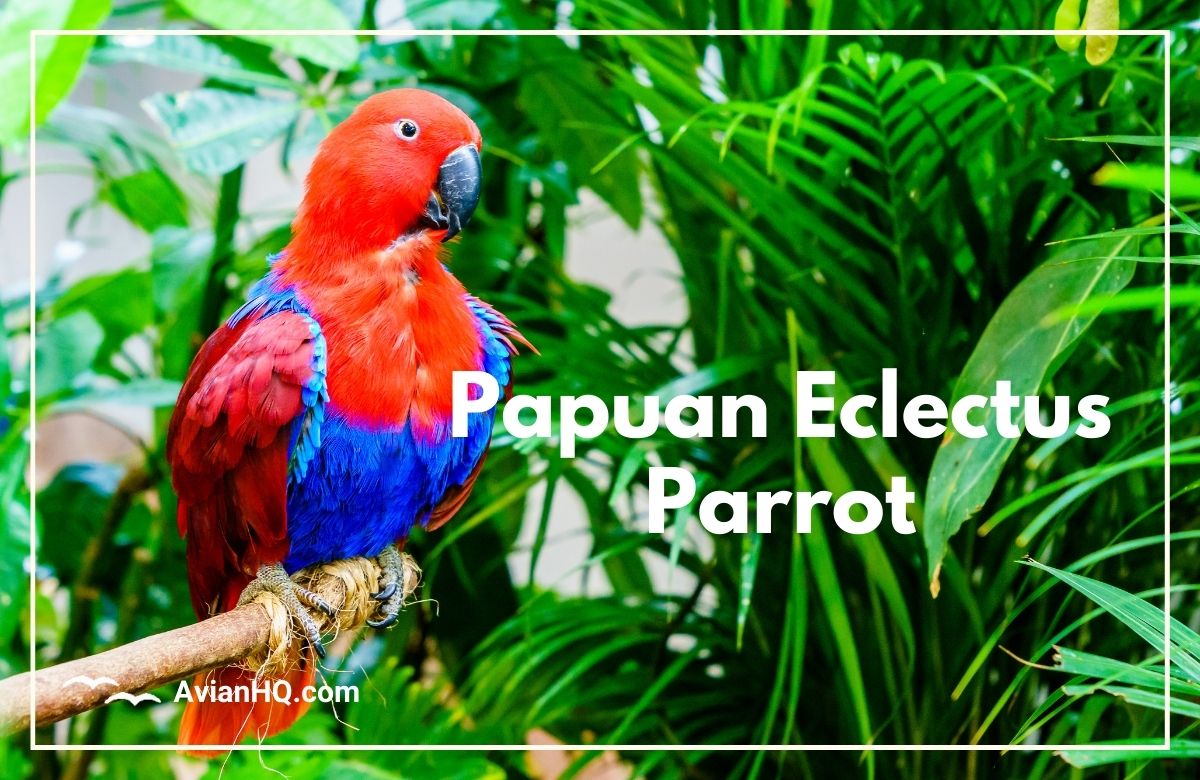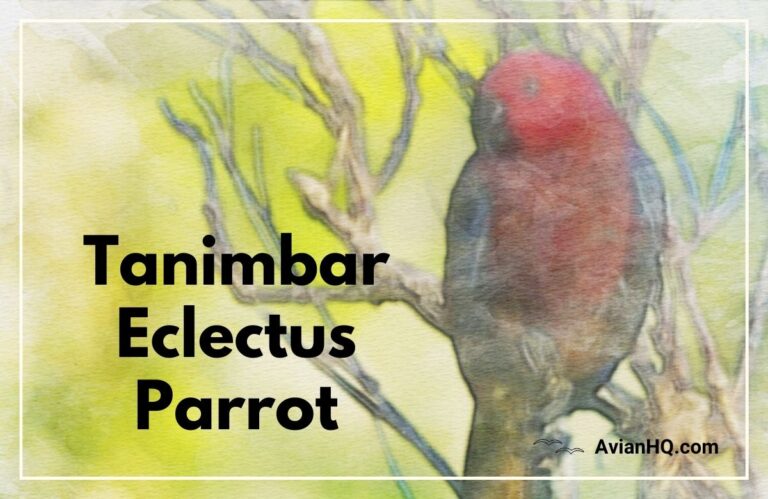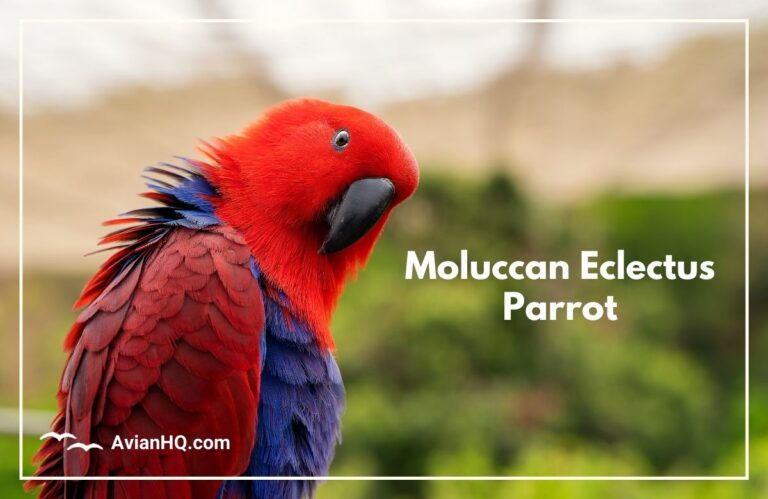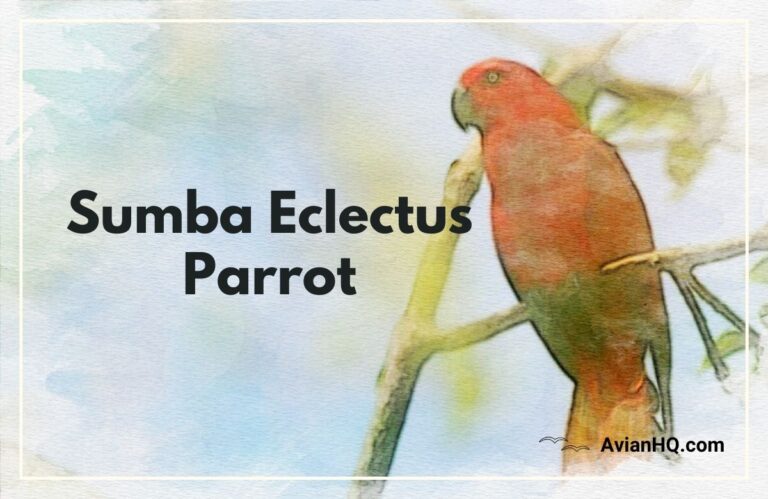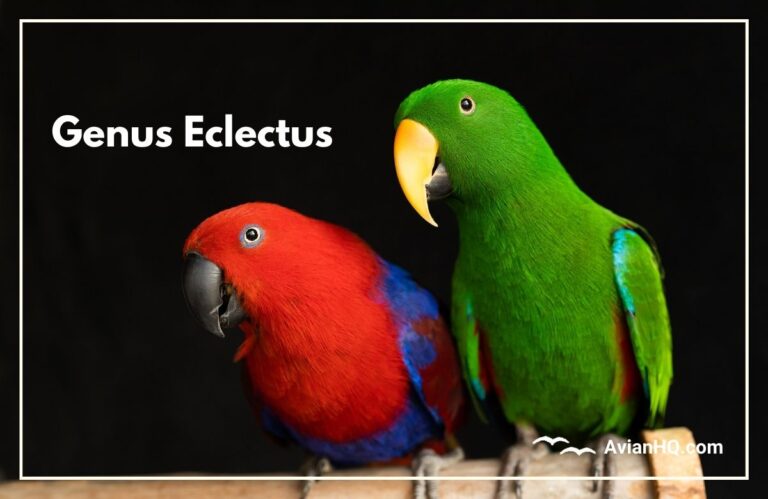Papuan Eclectus Parrot (Eclectus polychloros)
The Papuan Eclectus Parrot (Eclectus polychloros) is a brightly colored parrot native to the island of New Guinea and nearby islands in Indonesia and the South Pacific. With it’s striking sexual dimorphism and brilliant red, green, blue, and orange plumage, this medium-sized parrot is considered one of the most beautiful members of the parrot family.
The Papuan Eclectus inhabits the rainforest canopies of it’s tropical home, feeding on fruits, seeds, and flowers. These social birds are usually seen in small flocks calling loudly to each other as they forage high in the treetops.
This species has a long history in aviculture due to it’s stunning looks and relative availability compared to other large parrots. However, deforestation and trapping for the pet trade have led to population declines across parts of it’s range. Ongoing conservation efforts aim to protect remaining habitat and curb illegal trapping.
In this article, we’ll take a deep dive into the natural history of the Papuan Eclectus Parrot, exploring it’s taxonomy, physical features, habitat, ecology, breeding behavior, conservation status, and cultural significance across New Guinea.
Taxonomy and History
The Papuan Eclectus Parrot was first described scientifically in 1788 by the Italian naturalist Giovanni Antonio Scopoli, who gave it the binomial name Psittacus polychloros. The genus name Eclectus comes from the Greek word meaning “chosen”, referring to this parrot’s bright plumage. The species name polychloros means “many-colored” in Greek, another nod to it’s varied hues.
Five subspecies of the Papuan Eclectus are recognized today based on differences in size, coloration, and geographic distribution:
- E. p. polychloros – The nominate subspecies found across mainland New Guinea
- E. p. aruensis – Native to the Aru Islands in Indonesia
- E. p. biaki – Endemic to Biak Island north of New Guinea
- E. p. macgillivrayi – Restricted to Cape York Peninsula in Australia
- E. p. solomonensis – Occurs in the Solomon Islands east of New Guinea
Early European explorers in the 1600s provided some of the first written accounts of encountering these parrots, captivated by their unique appearance. Since the late 19th century, the Papuan Eclectus has been a popular species in aviculture and DISPLAYprized for it’s colorful plumage.
Physical Description
The Papuan Eclectus Parrot exhibits a striking sexual dimorphism in it’s coloration. Males have predominantly bright green plumage with more yellowish hues on the head, blue wing feathers, and a yellow band on the tail tip. They reach approximately 35 cm (14 inches) long and weigh 450-600 grams (1-1.3 pounds).
Females are mainly covered in vibrant red and purple feathers, with a bright blue abdomen, blue-edged wings, and orange tail tip. Their size is similar to males. The beak is large and curves downwards in both sexes. Legs are grayish and zygodactylous with two toes facing forward and two backward.
Juveniles initially resemble adult females but have more subdued colors and dark gray beaks. Their plumage gradually transforms to the adult coloration after 1-2 years. Size and color intensity varies somewhat between the different subspecies. The Solomon Island eclectus is generally smaller than the nominate New Guinea race, while the Australian eclectus is larger.
Distribution and Habitat
The Papuan Eclectus Parrot is endemic to the island of New Guinea and surrounding islands including the Aru Islands, Kai Islands, Trobriand Islands, D’Entrecasteaux Islands, and Bismarck Archipelago. The subspecies E. p. macgillivrayi is restricted to the northern Cape York Peninsula of Australia.
This species primarily inhabits lowland rainforests up to an elevation of around 3,300 feet (1,000 meters). It occupies a range of wooded habitats including mangroves, swamp forests, wooded savannas, and human-modified areas such as plantations and gardens.
Papuan eclectus parrots were also introduced to the Goram Islands in Indonesia, where feral populations are now established. They are absent from the driest scrublands and montane areas above the treeline.
Diet and Feeding
The Papuan Eclectus is omnivorous, feeding on a variety of fruits, seeds, nuts, buds, and flowers. Important food sources include figs, pandanus fruits, wild nutmeg, and native berries.
These parrots use their strong curved beaks to open hard-shelled fruits and seeds. They may also nibble on bark and leaf buds while foraging. Feeding activity peaks in the early morning and late afternoon.
Papuan eclectus parrots forage for food in small flocks or pairs, clambering through the rainforest canopy with agile movements. They are frequently seen hanging upside down or sideways to access fruit clusters. Their zygodactyl feet provide a strong grip on branches.
At especially plentiful food sources like fig trees, up to 80 birds may congregate in the treetops to feed. However, they typically spread out over a wide area while foraging through the forest.
Breeding and Reproduction
The breeding season of Papuan Eclectus Parrots varies across their range but normally peaks between April and September. Pairs nest in natural tree hollows high up in large rainforest trees. The female lays a clutch of just 2 eggs into a layer of decayed wood dust.
The eggs are incubated by the female alone for 28-30 days until hatching. The male feeds her during this time. Once hatched, both parents feed the chicks a diet of regurgitated pulp and seeds.
Nestlings fledge at around 11 weeks old but remain dependent on their parents for several more weeks. Juveniles may stay with the parents for up to a year after fledging as they learn to forage on their own.
Behavior and Ecology
Papuan Eclectus Parrots are highly social and vocal birds. They spend most of their time high in the rainforest canopy in pairs or small flocks of up to 12 individuals.
In the evenings, they congregate at communal roost sites in large trees, sometimes joined by other parrot species. Up to 80 eclectus parrots may assemble at a single roost tree, calling loudly and jostling for the best positions.
Pairs preen each other frequently as part of bonding rituals. Courtship displays involve the male feeding the female and showing off his bright plumage. These parrots bathe regularly by fluttering in the rain.
When alarmed, eclectus parrots emit a harsh screeching call and take to the air. But they usually remain quite wary of humans and other potential threats in their rainforest home. Predators include various raptors, monitor lizards, and snakes.
Conservation Status
The Papuan Eclectus Parrot has an extremely large range and global population estimated between 990,000 to 1.1 million individuals. The IUCN Red List classifies it as Least Concern.
However, habitat destruction for logging and agriculture is an ongoing threat across New Guinea. Unsustainable trapping for the pet trade has also led to declines in some areas. Several of the outlying island subspecies have severely limited distributions and may warrant more protected status.
In Australia, the range of the subspecies macgillivrayi has contracted by over 90% since the early 1900s due to trapping and habitat loss. Remaining populations are now protected, and illegal trade has been curbed. Expanding oil palm plantations are a concern across parts of Indonesia as well.
Cultural Significance
The brilliant plumage and loud calls of the Papuan Eclectus Parrot have made them a distinctive part of traditional cultures across New Guinea. Many indigenous groups feature these parrots in folklore, rituals, dances, and artwork.
To the native Kalam people of Papua New Guinea, the red female eclectus represents a daughter and the green male symbolizes a son. Various clans and lineages use the eclectus as their animal totem.
Across New Guinea, these captivating parrots are also prized as pets and status symbols. Sustainable harvesting from the wild provides an important source of income for local communities. Going forward, balancing cultural values and economic needs with conservation will be vital for protecting these special birds.
Conclusion
With it’s stunning sexual dimorphism, colorful plumage, and rainforest acrobatics, the Papuan Eclectus Parrot is one of the most spectacular parrots on Earth. As logging and trapping pressures continue to mount, preserving adequate habitat will be key to ensuring the future of these charismatic parrots across their island home of New Guinea. Their beauty and behaviors will hopefully continue to fascinate bird enthusiasts and inspire conservation efforts for years to come.

